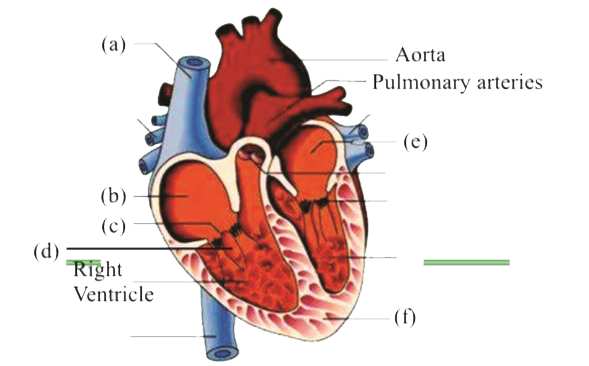What are the consequences of the noise pollution on humans?
a. Psychological disorders
b. Physiological disorders
C. Sleeping sickness
d. Increased heart beat
e. Altered breathing pattern
f. Stress
c, d, e and f
a, b, d, e and f
a, b, c and f
a, b, c, d, e and f
The correct Answer is:B
The consequences of the noise pollution on humans
a. Psychological disorders
b. Physiological disorders
c. Sleeplessness
d. Increased heart beat
e.altered breathing pattern
f.Stress
Topper's Solved these Questions
- BOOK - A2ZCHAPTER - ENVIRONMENTAL ISSUESEXERCISE - Section A: Topicwise Questions (topic 2: Water Pollution And Its Control) A Case Study Of Integrated61videos
ENVIRONMENTAL ISSUES
- BOOK - A2ZCHAPTER - ENVIRONMENTAL ISSUESEXERCISE - Section A: Topicwise Questions (topic 3: Solid, Wastes, Agro-chemicals And Their Effects, Radioactiv23videos
ENVIRONMENTAL ISSUES
- BOOK - A2ZCHAPTER - ENVIRONMENTAL ISSUESEXERCISE - Section D : Chapter-end Test50videos
ENVIRONMENTAL ISSUES
- BOOK - A2ZCHAPTER - ECOSYSTEMEXERCISE - Section-d Chapter-end Test50videos
ECOSYSTEM
- BOOK - A2ZCHAPTER - EVOLUTIONEXERCISE - Section D : Chapter-end Test50videos
EVOLUTION
Similar Questions
Knowledge Check
- Question 1 - Select One
Consider the following statements
I.Noise causes psychological disorder in humans
II.Noise causes physiological disorder in humans
III.Noise is measurable unit in dB but sometimes it is measured in Dobson unit
IV.150 dB is tolerable for human
Which of the above statements are true?AI and IVBI and IICI,ii and IVDI and III - Question 2 - Select One
Given below are four jumbled sentences. Select the option that gives their correct order.
A. The brain is active too during sleep, sending messages for the
heart to beat regularly.
B. However, the body utilizes the sleeping time effectively.
C. We spend about one third of our time sleeping.
D. It produces energy and releases hormones for repair and growth during the night.Aa) BADCBb) ABDCCc) CABDDd) CBDA - Question 3 - Select One
What is the measure of temperature considered as normal in human body?
A. 95 degree F
B. 97 degree F
C. 98.6 degree F
D. 96.8 degree FABBDCCDA
Research shows that loud sound can have a significant impact on human health, as well as doing devastating damage to ecosystems. Unwanted sound (noise) can damage physi-ological health. Noise pollution is associated with several health conditions, including car-diovascular disorders, hypertension, high stress levels, tinnitus, hearing loss, sleep disturbances, and other harmful and disturbing effects.
View SolutionFor the reaction A+B→C+D, if concentratiton of A is doubled without altering the concentration of B, the rate gets doubling, If the concentration of B is increased by nine times without altering the concentration of A, the rate gas tripled. The order of reaction is
View SolutionThe two glands A and B which occur in pairs, are present in the endocrine system of humans. The pair of glands A is found onlyin females whereas the pair of glands B occurs only in males. The glands A make and secrete two hormones C and D whereas glands B make and secrete only one hormone E. In addition to hormones, glands A make gametes F whereas glands B make gametes G.
What are glands A?
What are hormones C and D?
(c) What are glands B? Name the hormone E.
(d) What are gametes (i) F, and (ii) G?
(e) Which event in the life of males and females is associated with the secretion of hormones, C,D and E?View SolutionMatch column I and column II and choose the correct answer code :
Column IColumn II(Psychological Disorders)(Symptoms)a.Mood disorders(i)Distorted thoughtb.Schizopherina(ii)Depressionc.Borderline personality disorder(iii)Sweating nausea diarrhoea trembling etc.d.Anxiety disorder(iv)Quarrelsome behaviourView SolutionA system of greater disorder of molecules is more probable. The disorder of molecules is reflected by the entropy of the system. A liquid vapourizes to form a more disordered gas. When a solute is present, there is additional contribution to the entropy of the liquid due to increased randomness. As the entropy of solution is higher than that of pure liquid, there is weaker tendency to form the gas. Thus, a solute (non-volatile) lowers the vapour pressure of a liquid, and hence a higher boiling point of the solution.
Similarly, the greater randomness of the solution opposes the tendercy to freeze. In consequence, a lower temperature must be reached for achieving the equilibrium between the solid (frozen solvent) and the solution. The elevation in boiling point (ΔTb) and depression in freezing point (ΔTf) of a solution are the colligative properties which depend only on the concentration of particles of the solute and not their identity. For dilute solutions, (ΔTb) and (ΔTf) are proportional to the molarity of the solute in the solution.
To aqueous solution of Nal, increasing amounts of solid Hgl2 is added. The vapour pressure of the solutionView Solution

